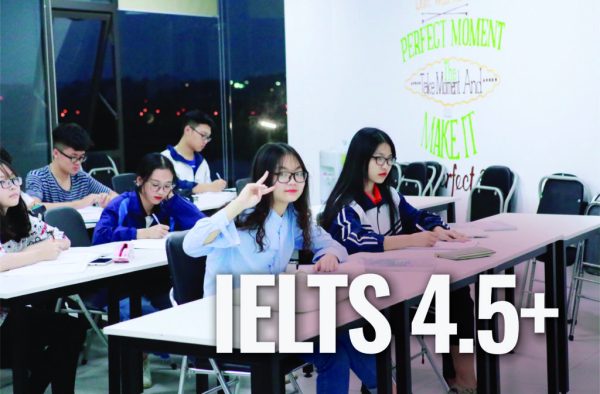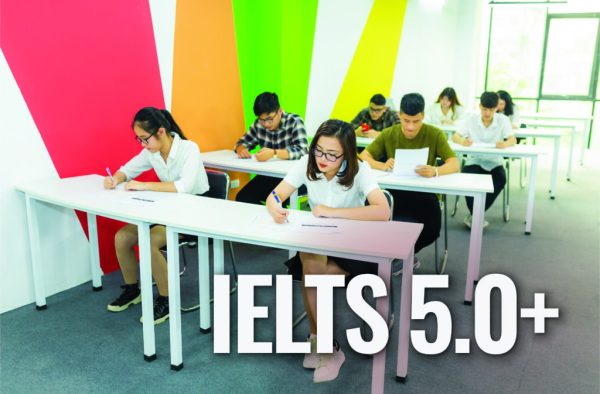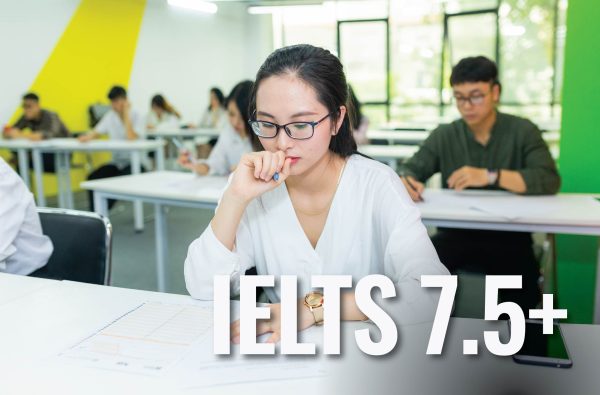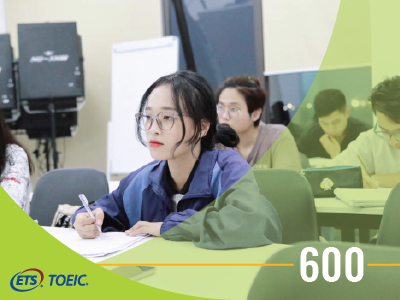Nhận tư vấn về lộ trình học
Changes in reading habits
14 Tháng Mười Hai, 2023 | 734 lượt xem
What are the implications of the way we read today?
Giải đề IELTS Reading Cambridge 16. Test 4. Passage 2. Changes in reading habits. Thay đổi thói quen đọc sách.

(Đoạn 1)
Look around on your next plane trip. The iPad is the new pacifier for babies and toddlers. Younger school-aged children read stories on smartphones; older kids don’t read at all, but hunch over video games. Parents and other passengers read on tablets or skim a flotilla of email and news feeds. (Question 14) Unbeknown to most of us, an invisible, game-changing transformation links everyone in this picture: the neuronal circuit that underlies the brain’s ability to read is subtly, rapidly changing and this has implications for everyone from the pre-reading toddler to the expert adult.
Nếu bạn sắp có một chuyến bay, hãy thử nhìn xung quanh. IPad có thể sẽ là núm vú giả mới cho trẻ sơ sinh và trẻ mới biết đi. Trẻ ở độ tuổi đi học đọc truyện trên điện thoại thông minh; những đứa trẻ lớn hơn không đọc gì cả, nhưng sẽ dán mắt vào các trò chơi điện tử. Phụ huynh và những hành khách khác đọc trên máy tính bảng hoặc lướt qua một loạt email và tin tức. Hầu hết chúng ta không hề để ý tới, một sự biến đổi to lớn vô hình đã liên kết mọi người trong bức tranh này: dây thần kinh làm nền tảng cho khả năng đọc của bộ não đang thay đổi một cách tinh tế, nhanh chóng và điều này có ý nghĩa đối với tất cả mọi người từ trẻ mới biết đọc đến người lớn có trình độ chuyên môn.
(Đoạn 2)
As work in neurosciences indicates, the acquisition of literacy necessitated a new circuit in our species’ brain more than 6,000 years ago. That circuit evolved from a very simple mechanism for decoding basic information, like the number of goats in one’s herd, to the present, highly elaborated reading brain. My research depicts how the present reading brain enables the development of some of our most important intellectual and affective processes: internalized knowledge, analogical reasoning, and inference; perspective-taking and empathy; critical analysis and the generation of insight. Research surfacing in many parts of the world now cautions that each of these essential ‘deep reading’ processes may be under threat as we move into digital- based modes of reading.
Như nghiên cứu về khoa học thần kinh đã chỉ ra, việc học chữ đòi hỏi một dây thần kinh chuyên dụng trong não của loài người chúng ta hơn 6.000 năm trước. Dây thần kinh đó phát triển từ một cơ chế rất đơn giản để giải mã thông tin cơ bản, chẳng hạn như số lượng dê trong một đàn, đến bộ não đọc phức tạp như hiện nay. Nghiên cứu của tôi mô tả cách bộ não đọc hiện tại cho phép phát triển một số quá trình trí tuệ và tình cảm quan trọng nhất của chúng ta: kiến thức nội tại, lý luận loại suy và suy luận; quan điểm và sự đồng cảm; phân tích quan trọng và tạo ra cái nhìn sâu sắc. Nghiên cứu nổi lên ở nhiều nơi trên thế giới hiện cảnh báo rằng mỗi quá trình ‘đọc sâu’ thiết yếu này có thể bị đe dọa khi chúng ta chuyển sang các phương thức đọc trên các phương tiện kỹ thuật số.
(Đoạn 3)
This is not a simple, binary issue of print versus digital reading and technological innovation. (Question 15) As MIT scholar Sherry Turkle has written, we do not err as a society when we innovate but when we ignore what we disrupt or diminish while innovating. In this hinge moment between print and digital cultures, society needs to confront what is diminishing in the expert reading circuit, what our children and older students are not developing, and what we can do about it.
Đây không phải là một vấn đề nhị phân đơn giản giữa việc in ấn với việc đọc trên các thiết bị kỹ thuật số và đổi mới công nghệ. Như học giả Sherry Turkle của MIT đã viết, với tư cách là một xã hội, việc đổi mới không phải là sai lầm, mà sai lầm là khi chúng ta bỏ qua những gì chúng ta phá vỡ hoặc giảm thiểu trong khi đổi mới. Trong thời điểm bản lề giữa văn hóa in và kỹ thuật số này, xã hội cần phải đối mặt với những gì đang biến mất trong phần não bộ chuyên dùng cho việc đọc, những gì trẻ em và học sinh lớn tuổi hơn không phát triển và chúng ta có thể làm gì với điều đó.
(Đoạn 4)
We know from research that the reading circuit is not given to human beings through a genetic blueprint like vision or language; it needs an environment to develop. (Question 16) Further, it will adapt to that environment’s requirements — from different writing systems to the characteristics of whatever medium is used. If the dominant medium advantages processes that are fast, multi-task oriented and well-suited for large volumes of information, like the current digital medium, so will the reading circuit. As UCLA psychologist Patricia Greenfield writes, the result is that less attention and time will be allocated to slower, time-demanding deep reading processes.
Chúng tôi biết từ nghiên cứu rằng dây thần kinh đọc không được trao cho con người thông qua di truyền gen giống như thị giác hoặc ngôn ngữ; nó cần một môi trường để phát triển. Hơn nữa, nó sẽ thích ứng với các yêu cầu của môi trường đó — từ các hệ thống chữ viết khác nhau đến các đặc điểm của bất kỳ phương tiện nào được sử dụng. Nếu phương tiện vượt trội mang lại lợi thế cho các quy trình nhanh chóng, định hướng đa tác vụ và phù hợp với khối lượng thông tin lớn, giống như phương tiện kỹ thuật số hiện tại, thì dây thần kinh đọc cũng vậy. Như nhà tâm lý học Patricia Greenfield của UCLA viết, kết quả là sẽ có ít sự chú ý hơn và thời gian sẽ được phân bổ cho quá trình đọc sâu chậm hơn, đòi hỏi nhiều thời gian hơn.
(Đoạn 5)
Increasing reports from educators and from researchers in psychology and the humanities bear this out. (Question 17) English literature scholar and teacher Mark Edmundson describes how many college students actively avoid the classic literature of the 19th and 20th centuries in favour of something simpler as they no longer have the patience to read longer, denser, more difficult texts. We should be less concerned with students’ ‘cognitive impatience’, however, than by what may underlie it: the potential inability of large numbers of students to read with a level of critical analysis sufficient to comprehend the complexity of thought and argument found in more demanding texts.
Ngày càng có thêm nhiều báo cáo từ các nhà giáo dục và từ các nhà nghiên cứu về tâm lý học và nhân văn chứng minh điều này. Học giả và giáo viên văn học Anh Mark Edmundson mô tả có bao nhiêu sinh viên đại học tích cực tránh văn học cổ điển của thế kỷ 19 và 20 để ủng hộ thứ gì đó đơn giản hơn vì họ không còn đủ kiên nhẫn để đọc những văn bản dài hơn, dày đặc hơn và khó hơn. Tuy nhiên, chúng ta nên ít quan tâm đến ‘sự thiếu kiên nhẫn về nhận thức’ của sinh viên hơn là những gì ẩn sau nó: khả năng một số lượng lớn sinh viên không có khả năng đọc với mức độ phân tích quan trọng đủ để hiểu được sự phức tạp của suy nghĩ và lập luận được tìm thấy trong nhiều văn bản có tính nâng cao.
(Đoạn 6)
(Question 18) Multiple studies show that digital screen use may be causing a variety of troubling downstream effects on reading comprehension in older high school and college students. In Stavanger, Norway, psychologist Anne Mangen and her colleagues studied how high school students comprehend the same material in different mediums. (Question 19) Mangen’s group asked subjects questions about a short story whose plot had universal student appeal; half of the students read the story on a tablet, the other half in paperback. (Question 20) Results indicated that students who read on print were superior in their comprehension to screen-reading peers, particularly in their ability to sequence detail and reconstruct the plot in chronological order.
Nhiều nghiên cứu cho thấy rằng việc sử dụng màn hình kỹ thuật số có thể gây ra nhiều tác động ngược chiều đáng lo ngại đối với khả năng đọc hiểu ở học sinh trung học và đại học lớn tuổi. Ở Stavanger, Na Uy, nhà tâm lý học Anne Mangen và các đồng nghiệp của cô đã nghiên cứu cách học sinh trung học đọc hiểu cùng một tài liệu bằng các phương tiện khác nhau. Nhóm của Mangen đặt câu hỏi cho các đối tượng về một truyện ngắn có cốt truyện thu hút toàn thể học sinh; một nửa số học sinh đọc truyện trên máy tính bảng, nửa còn lại đọc sách in giấy. Kết quả chỉ ra rằng những sinh viên đọc trên bản in có khả năng hiểu vượt trội so với những sinh viên đọc trên màn hình, đặc biệt là ở khả năng sắp xếp chi tiết và xây dựng lại cốt truyện theo trình tự thời gian.
(Đoạn 7)
Ziming Liu from San Jose State University has conducted a series of studies which indicate that the ‘new norm’ in reading is skimming, involving word-spotting and browsing through the text. Many readers now use a pattern when reading in which (Question 21) they sample the first line and then word- spot through the rest of the text. When the reading brain skims like this, it reduces time allocated to deep reading processes. (Question 22) In other words, we don’t have time to grasp complexity, to understand another’s feelings, to perceive beauty, and to create thoughts of the reader’s own.
Ziming Liu từ Đại học Bang San Jose đã tiến hành một loạt nghiên cứu chỉ ra rằng ‘chuẩn mực mới’ trong việc đọc là đọc lướt, liên quan đến việc phát hiện từ và duyệt qua văn bản. Nhiều độc giả bây giờ sử dụng một phương pháp khi đọc, trong đó họ lấy mẫu dòng đầu tiên và sau đó tìm từ trong phần còn lại của văn bản. Khi bộ não đọc lướt như vậy, nó sẽ giảm thời gian dành cho quá trình đọc sâu. Nói cách khác, chúng ta không có thời gian để nắm bắt sự phức tạp, để hiểu cảm xúc của người khác, để cảm nhận cái đẹp và để tạo ra những suy nghĩ của riêng người đọc.
(Đoạn 8)
The possibility that critical analysis, empathy and other deep reading processes could become the unintended ‘collateral damage’ of our digital culture is not a straightforward binary issue about print versus digital reading. (Question 23) It is about how we all have begun to read on various mediums and how that changes not only what we read, but also the purposes for which we read. Nor is it only about the young. The subtle atrophy of critical analysis and empathy affects us all equally. It affects our ability to navigate a constant bombardment of information. (Question 25) It incentivizes a retreat to the most familiar stores of unchecked information, which require and receive no analysis, leaving us susceptible to false information and irrational ideas.
Khả năng việc phân tích phê bình, sự đồng cảm và các quá trình đọc sâu khác có thể trở thành ‘thiệt hại ngoài ý muốn’ đối với nền văn hóa kỹ thuật số của chúng ta, không phải là vấn đề nhị phân đơn giản về việc đọc trên giấy in và việc đọc trên phương tiện kỹ thuật số. Đó là về cách tất cả chúng ta đã bắt đầu đọc trên nhiều phương tiện khác nhau và cách điều đó thay đổi không chỉ những gì chúng ta đọc mà còn cả mục đích mà chúng ta đọc. Nó cũng không chỉ nói về giới trẻ. Sự giảm thiểu ẩn dật của phân tích phê bình và sự đồng cảm ảnh hưởng đến tất cả chúng ta như nhau. Nó ảnh hưởng đến khả năng của chúng ta để điều hướng một loạt thông tin liên tục. Nó khuyến khích việc quay trở lại với các dữ liệu thông tin quen thuộc nhất chưa được kiểm tra, vốn không cần hay chưa có sự phân tích, khiến chúng ta dễ bị ảnh hưởng bởi thông tin sai lệch và những ý tưởng phi lý.
(Đoạn 9)
(Question 24) There’s an old rule in neuroscience that does not alter with age: use it or lose it. It is a very hopeful principle when applied to critical thought in the reading brain because it implies choice. The story of the changing reading brain is hardly finished. (Question 26) We possess both the science and the technology to identify and redress the changes in how we read before they become entrenched. If we work to understand exactly what we will lose, alongside the extraordinary new capacities that the digital world has brought us, there is as much reason for excitement as caution.
Có một quy tắc cũ trong khoa học thần kinh mà không thay đổi theo thời gian: sử dụng nó hoặc đánh mất nó. Đó là một nguyên tắc rất đáng hy vọng khi được áp dụng cho tư duy phản biện trong bộ não đọc vì nó bao hàm sự lựa chọn. Câu chuyện về sự thay đổi của bộ não đọc còn chưa kết thúc. Chúng ta sở hữu cả khoa học và công nghệ để xác định và khắc phục những thay đổi trong cách chúng ta đọc trước khi chúng trở nên bất biến. Nếu chúng ta làm việc để hiểu chính xác những gì chúng ta sẽ mất, bên cạnh những khả năng mới phi thường mà thế giới kỹ thuật số đã mang lại cho chúng ta, thì có nhiều lý do để phấn khích cũng như thận trọng.
Danh mục
Giải thích đáp án các câu 14-17
Câu 14
What is the writer’s main point in the first paragraph?
A. Our use of technology is having a hidden effect on us.
B. Technology can be used to help youngsters to read.
C. Travellers should be encouraged to use technology on planes.
D. Playing games is a more popular use of technology than reading.
=> Đáp án câu 14: A
Dẫn chứng trong đoạn 1:
Unbeknown to most of us, an invisible, game-changing transformation links everyone in this picture: the neuronal circuit that underlies the brain’s ability to read is subtly, rapidly changing and this has implications for everyone from the pre-reading toddler to the expert adult.
Đối chiếu thông tin trong câu hỏi và bài đọc:
- hidden = unbeknown, invisible
- effect on us = implications for everyone
Câu 15
What main point does Sherry Turkle make about innovation?
A. Technological innovation has led to a reduction in print reading.
B. We should pay attention to what might be lost when innovation occurs.
C. We should encourage more young people to become involved in innovation.
D. There is a difference between developing products and developing ideas.
=> Đáp án câu 15: B
Dẫn chứng trong đoạn 3:
As MIT scholar Sherry Turkle has written, we do not err as a society when we innovate but when we ignore what we disrupt or diminish while innovating.
Đối chiếu thông tin trong câu hỏi và bài đọc:
- we should pay attention = we err when we ignore
- when innovation occurs = while innovating
- what might be lost = what we disrupt or diminish
Câu 16
What point is the writer making in the fourth paragraph?
A. Humans have an inborn ability to read and write.
B. Reading can be done using many different mediums.
C. Writing systems make unexpected demands on the brain.
D. Some brain circuits adjust to whatever is required of them.
=> Đáp án câu 16: D
Dẫn chứng trong đoạn 4:
Further, it will adapt to that environment’s requirements – from different writing systems to the characteristics of whatever medium is used.
Đối chiếu thông tin trong câu hỏi và bài đọc:
- adjust to whatever is required = adapt to that environment’s requirements
Câu 17
According to Mark Edmundson, the attitude of college students…
A. has changed the way he teaches.
B. has influenced what they select to read.
C. does not worry him as much as it does others.
D. does not match the views of the general public.
=> Đáp án câu 17: B
Dẫn chứng trong đoạn 5:
‘Mark Edmundson describes how many college students actively avoid the classic literature of the 19th and 20th centuries in favour of something simpler as they no longer have the patience to read longer, denser, more difficult texts’
Đối chiếu thông tin trong câu hỏi và bài đọc:
- what they select to read = avoid the classic literature… in favour of something simpler
Questions 18-22
Complete the summary using the list of words, A-H, below.
Giải thích đáp án các câu 18-22
Questions 18-22
Complete the summary using the list of words, A-H, below.
A. fast B. isolated
C. emotional D. worrying
E. many F. hard
G. combined H. thorough
| Studies on digital screen useThere have been many studies on digital screen use, showing some (18) …………………………. trends. Psychologist Anne Mangen gave high-school students a short story to read, half using digital and half using print mediums. Her team then used a question & answer technique to find out how (19) …………………………. each group’s understanding of the plot was. The findings showed a clear pattern in the responses, with those who read screens finding the order of information (20) ………………………… to recall. Studies by Ziming Liu show that students are tending to read (21) ………………………… words and phrases in a text to save time. This approach, she says, gives the reader a superficial understanding of the (22) ………………………… content of material, leaving no time for thought. |
Câu 18
There have been many studies on digital screen use, showing some ………. trends.
=> Đáp án câu 18: D. worrying
Dẫn chứng trong đoạn 6:
Multiple studies show that digital screen use may be causing a variety of troubling downstream effects on reading comprehension in older high school and college students.
Đối chiếu thông tin trong câu hỏi và bài đọc:
- many studies = multiple studies
- showing some = causing a variety of
- trend = downstream effects
Câu 19
Psychologist Anne Mangen …. Her team then used a question-and-answer technique to find out how………………… each group’s understanding of the plot was.
=> Đáp án câu 19: H. thorough
Dẫn chứng trong đoạn 6:
… psychologist Anne Mangenand her colleagues studied how high school students comprehend the same material in different mediums. Mangen’s group asked subjects questions about a short story whose plot had universal student appeal;
Đối chiếu thông tin trong câu hỏi và bài đọc:
- a question-and-answer technique = asked subjects questions
- understanding of the plot = comprehend the same material
Câu 20
The findings showed a clear pattern in the responses, with those who read screens finding the order of information ……… to recall.
=> Đáp án câu 20: F. hard
Dẫn chứng trong đoạn 6:
Results indicated that students who read on print were superior in their comprehension to screen-reading peers, particularly in their ability to sequence detail and reconstruct the plot in chronological order
Đối chiếu thông tin trong câu hỏi và bài đọc:
- findings showed = results indicated
- those who read screens find … hard to recall = students who read on print were superior to screen-reading peers
- the order of information = to sequence detail and reconstruct the plot in chronological order
Câu 21
Studies by Ziming Liu show that students are tending to read……… words and phrases in a text to save time
=> Đáp án câu 21: B. isolated
Dẫn chứng trong đoạn 7:
Many readers now use a pattern when reading in which they sample the first line and then word spot through the rest of the text. When the reading brain skims like this, it reduces time allocated to deep reading processes.
Đối chiếu thông tin trong câu hỏi và bài đọc:
- read isolated words and phrases in a text= sample the first line and then word spot
- save time = reduces time
Câu 22
This approach, she says, gives the reader a superficial understanding of the…………… content of material, leaving no time for thought.
=> Đáp án câu 22: C. emotional
Dẫn chứng trong đoạn 7:
In other words, we don’t have time to grasp complexity, to understand another’s feelings, to perceive beauty, and to create thoughts of the reader’s own.
Đối chiếu thông tin trong câu hỏi và bài đọc:
- understanding of the emotional content = understand another’s feelings
Questions 23-26
Do the following statements agree with the views of the writer in Reading Passage 2?
Giải thích đáp án các câu 23-26
Câu 23:
The medium we use to read can affect our choice of reading content.
=> Đáp án Câu 23: YES
Dẫn chứng trong đoạn 8:
Thông tin trùng khớp trong câu hỏi và trong bài văn:
| Trong câu hỏi:The medium we use to read affect our choice of reading content | Trong bài văn we all have begun to read on various mediumschanges not only what we read |
Câu 24:
Some age groups are more likely to lose their complex reading skills than others.
=> Đáp án Câu 24: NO
Dẫn chứng trong đoạn 9:
Thông tin đối lập trong câu hỏi và trong bài văn:
| Trong câu hỏi:some age groups are more likely to lose their complex reading skills than others | Trong bài văn does not alter with age: use it or lose it |
Câu 25:
False information has become more widespread in today’s digital era.
=> Đáp án Câu 25: NOT GIVEN
Dẫn chứng trong đoạn 8:
It incentivizes a retreat to the most familiar stores of unchecked information, which require and receive no analysis, leaving us susceptible to false information and irrational ideas.
Đoạn văn có nhắc đến các từ khóa False information, tuy nhiên không nhắc đến rằng chúng có thể lan truyền trong kỷ nguyên kỹ thuật số (more widespread in today’s digital era).
Câu 26:
We still have opportunities to rectify the problems that technology is presenting.
=> Đáp án Câu 26: YES
Dẫn chứng trong đoạn 9:
Thông tin trùng khớp trong câu hỏi và trong bài văn:
| Trong câu hỏi:have opportunities to rectify the problems that technology is presenting | Trong bài văn possess both the science and the technologyto identify and redressthe changes in how we read |
Bí quyết chinh phục IELTS Reading
Để đạt điểm cao trong IELTS Reading, bạn nên nắm rõ tips và chiến lược để làm bài với từng dạng đề cụ thể. Dù scanning và skimming là 2 kỹ năng nhất định phải dùng trong bài thi IELTS nhưng tùy từng dạng, chúng ta sẽ áp dụng ở những bước khác nhau.
Hãy tiếp tục theo dõi chuyên mục IELTS Reading của Universal Language Center và cùng tìm hiểu bí quyết chinh phục từng dạng đề thi IELTS Reading bạn nhé!
Để liên tục đánh giá trình độ hiện tại, hãy tham khảo bài thi tại đây: http://m.me/universal.edu.vn/
Hoặc tham dự thi thử bài thi IELTS IDP miễn phí tại các cơ sở của Universal Language Center:
- Cơ Sở 01: 262 Lạc Trung, Hai Bà Trưng, Hà Nội
- Cơ Sở 02: 114 Hoàng Như Tiếp, Long Biên, Hà Nội
- Cơ Sở 03: 12/36 Phan Kế Bính, Ba Đình, Hà Nội
- Cơ Sở 04: 619 Nguyễn Văn Cừ, Long Biên, Hà Nội
- Cơ Sở 05: 23 Tô Vĩnh Diện, Thanh Xuân, Hà Nội
- Cơ Sở 06: 222 Lý Nam Đế, Tân Quang, Tuyên Quang
- VPTNĐK: 1/58 Việt Hưng, Long Biên, Hà Nội
Tham khảo khóa học IELTS Cam kết đầu ra 7.5+ tại Universal: https://universal.edu.vn/khoa-hoc/khoa-hoc-ielts-mastery/
ĐĂNG KÝ NHẬN TIN






